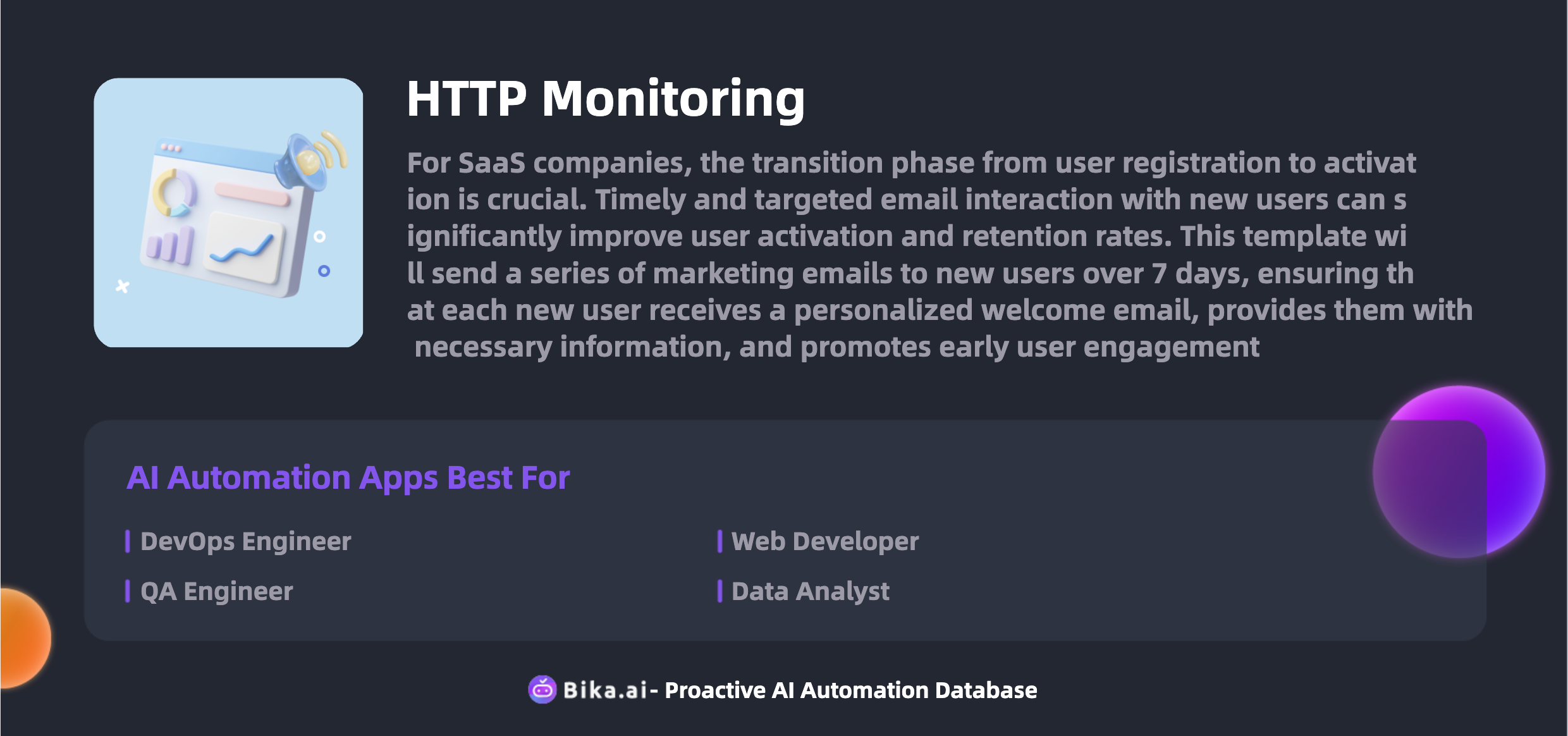
HTTP Monitoring: A Quality Airtable Alternative about Automation
Are you looking for a better alternative in the automation tool space?
Are you tired of dealing with the limitations and complexities of existing tools when it comes to HTTP Monitoring? If so, you might want to explore a new option - Bika.ai.

Airtable has been a popular choice for many, but it may not be the ideal solution for all your automation needs, especially when it comes to HTTP Monitoring. Bika.ai offers an automated template that could be the answer you've been searching for. Free Trial
Airtable vs Bika.ai: Key Features At a Glance
When comparing Airtable and Bika.ai, several key differences stand out.
| Feature | Airtable | Bika.ai |
|---|---|---|
| Pricing | Free provided, paid plans from $20/user/month | Free provided, paid plans from $9.99/user/month |
| Platform Type | No-code database | No-code AI automation database |
| Ease of Use | Base structure is geeky for non-tech users | Directory tree is easy to use and user-friendly for general users |
| Records per Database | Up to 125,000 records per base for Business plan | Up to 1,500,000 records per database for Team plan |
| Automation | Basic automation capabilities with limited triggers and actions | Advanced automation capabilities with extensive triggers and actions |
| Template | Templates don’t include automation capability; no automation publish and share | Plenty of plug-and-play AI automated templates with preset content; supports automation publish and share |
| Storage | 100 GB of attachments per base | 800 GB per space |
| API | Limited APIs | API-first platform making every feature an integration endpoint for automation |
It's clear that Bika.ai has some significant advantages over Airtable in various aspects.
Why Bika.ai's HTTP Monitoring Templates are a Better Solution
Bika.ai's HTTP Monitoring templates offer a superior solution to your automation challenges.
What exactly is the HTTP Monitoring template? It allows you to receive notifications when your website goes down. It also enables you to monitor HTTP requests, receive crash alerts, track performance metrics, and summarize them into reports.

The value of this template is immense. It helps increase efficiency by providing real-time monitoring and alerts, saving you precious time. It reduces errors by accurately tracking and analyzing performance metrics. Customization options allow it to fit your specific needs precisely. The convenience of having all this functionality in one place is unparalleled. And it can lead to significant cost savings in the long run.
Specific examples of its benefits include:
- Monitoring API requests to ensure smooth operation.
- Tracking website performance to optimize user experience.
- Analyzing response codes for quick issue identification.
- Extracting data from web pages for informed decision-making.
- Identifying bottlenecks to enhance system performance.
- Debugging API issues to minimize downtime.
- Monitoring website uptime to maintain business continuity.
- Tracking user behavior for better service customization.
- Real-time alerting on site downtime to take immediate action.
- Historical performance analysis for trend identification.
- Load testing and stress testing to prepare for high traffic.
- Customizable dashboards for performance metrics for easy visualization.
- Integration with other monitoring tools for a comprehensive overview.
- HTTP request and response logging for detailed analysis.
- Performance trend analysis for proactive improvements.
- SLA compliance monitoring to meet service level agreements.
- Traffic analysis to understand user patterns.
- Error rate tracking to improve system reliability.
- Automated incident response for prompt issue resolution.
- Alert customization and prioritization based on severity.
- Log aggregation and visualization for better data understanding.
- Secure data handling to protect sensitive information.
- API endpoint testing to ensure functionality.
- Integration with CI/CD pipelines for seamless development.
- Automated recovery procedures to minimize disruption.
- Cross-platform performance monitoring for a holistic view.
- Automated API health checks for proactive maintenance.
- Service level agreement (SLA) reporting to meet contractual obligations.
- Real-time system status updates for informed decision-making.
- Historical data comparison for benchmarking and improvement.
- API usage analytics to optimize resource allocation.
- Error and exception tracking for root cause analysis.
- Response time optimization to enhance user satisfaction.
- Load balancing monitoring to ensure efficient resource utilization.
- Real-time error detection for immediate corrective actions.
- Monitoring API rate limits to avoid violations.
- Security vulnerability detection to protect against threats.
- Automated performance reports for easy sharing and communication.
- Customizable alert thresholds for personalized notifications.
- Network latency tracking for performance optimization.
- Server response time analysis for system improvement.
How to Use Bika.ai's HTTP Monitoring Template
The process of using Bika.ai's HTTP Monitoring template is straightforward.
-
Install the Template Install the HTTP Monitoring Template through the platform. Once installation is complete, you will receive a success message and guidance for the next steps.
-
Enter URL Address Before using HTTP monitoring, you need to enter your URL address. Click the prompt button and follow the instructions to complete the entry.
-
Configure Monitoring Set the monitoring frequency, for example, check HTTP status every minute. Configure trigger conditions and actions, such as logging detailed information about HTTP requests and responses.
-
View Reports View the automatically generated reports and performance analyses to understand the operational status and potential issues of your website or API.
How to Switch From Airtable to Bika.ai
Switching from Airtable to Bika.ai is a simple process:
- Export your data from Airtable in a CSV or Excel format.
- Sign up for Bika.ai and use its data import tools to transfer your data.
- Set up your automation templates in Bika.ai to begin experiencing the benefits of AI automation immediately.
So, if you're in need of a more efficient and effective HTTP Monitoring solution, it's time to consider making the switch to Bika.ai and take your automation to the next level.

Recommend Reading
- Data Automation with Bika.ai: Unlocking New Potential for B2B AI CRM in Medical Industry Business Development Manager - develop new customers
- Bika.ai vs Airtable: To Celebrate project milestones
- Data Automation with Bika.ai: Unlocking New Potential for Slack Channel Scheduled Notifications in Version update reminders
- Data Automation with Bika.ai: Unlocking New Potential for Rotating Duty Reminder(Slack) in Duty record management
- Bika.ai vs Airtable: To Enhance customer loyalty
Recommend AI Automation Templates




